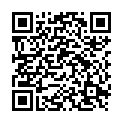|
|
|
| Module code: E402 |
|
3V+1U+2P (6 hours per week) |
|
7 |
| Semester: 4 |
| Mandatory course: yes |
Language of instruction:
German |
Assessment:
Written exam, graded lab work
[updated 10.03.2010]
|
E402. Biomedical Engineering, Bachelor, ASPO 01.10.2011
, semester 4, mandatory course, course inactive since 28.11.2013
E402 Electrical Engineering, Bachelor, ASPO 01.10.2005
, semester 4, mandatory course
|
90 class hours (= 67.5 clock hours) over a 15-week period.
The total student study time is 210 hours (equivalent to 7 ECTS credits).
There are therefore 142.5 hours available for class preparation and follow-up work and exam preparation.
|
Recommended prerequisites (modules):
E105 Digital Electronics
E303 Electronics I
[updated 10.03.2010]
|
Recommended as prerequisite for:
E520 Computer-Aided Circuit Design
E521 Integration-Compliant Circuit Engineering I
E614 Telecommunications Electronics
E615
[updated 12.03.2010]
|
Module coordinator:
Prof. Dr. Volker Schmitt |
Lecturer:
Prof. Dr. Volker Schmitt
[updated 10.03.2010]
|
Learning outcomes:
Having acquired an understanding of some basic and advanced principles of circuit design, students will be in a position to analyse and devise a wide variety of analogue and digital circuits. They will build on the computational and graphical techniques for dimensioning and analysing circuits acquired in Electronics I and will apply these methods (where necessary, in modified form) to circuits involving field-effect transistors and operational amplifiers.
The lab exercises provide students with an opportunity to use the typical measuring equipment and instrumentation found in an electronics lab and to collect and analyse experimental data.
[updated 10.03.2010]
|
Module content:
- Field-effect transistors: junction-gate field-effect transistors,
insulated-gate field-effect transistors, n-channel and p-channel FETs,
structure, function, characteristics, properties, thermal characteristics,
FET tetrodes, small-signal models
- FET circuits: setting the operating point, voltage-controlled resistance,
small-signal amplifier, MOSFET inverter, NMOS gate, CMOS gate
- Logic circuits with diodes and bipolar transistors: static and dynamic
switching of diodes and bipolar transistors, diode-transistor logic (DTL),
transistor-transistor logic (TTL), multi-emitter transistors
- Operational amplifiers – principles: difference amplifiers, small-signal
gain, transfer characteristics, operating points, current source switching,
level shifting, output stage
- Operational amplifiers − practical applications: Terminology and definitions,
stability and compensation, gain-bandwidth product, non-inverting and
inverting amplifiers, difference amplifiers, active filters, linear
controller, logarithmic amplifier, exponential amplifier, comparator, Schmitt
trigger, astable multivibrator, monostable multivibrator
- ECL gate: inverters, NOR and OR functions, NAND and AND functions
- Oscillators: selection criteria, frequency stability, RC, LC, quartz,
stimulation conditions, open-loop gain, parametric representation, circuits
- Structure and manufacture of silicon planar transistors: masks, lithography,
etching, doping
- Lab course: semiconductor diodes, characteristics of solid-state devices,
basic transistor circuits, transistor switching and TTL and CMOS
technologies, operational amplifiers, storage and programmable logic systems
[updated 10.03.2010]
|
Teaching methods/Media:
Overhead transparencies, master copies and exercise sheets, instructions for lab exercises
[updated 10.03.2010]
|
Recommended or required reading:
M. J. Cooke: Halbleiter-Bauelemente; Hanser Verlag, ISBN 3-446-16316-6
M. Reisch: Elektronische Bauelemente; Springer Verlag, ISBN 3-540-60991-1
A. Möschwitzer: Grundlagen der Halbleiter- & Mikroelektronik, Band 1: Elektronische
Halbleiterbauelemente; Hanser Verlag
Bystron/Borgmeyer: Grundlagen der technischen Elektronik; Hanser Verlag
R. Müller: Grundlagen der Halbleiter-Elektronik; Springer Verlag
J. Millman, A. Grabel: Microelectronics; McGraw Hill Verlag, ISBN 0-07-100596-X
Tietze, Schenk: Halbleiterschaltungstechnik; Springer Verlag
Giacoletto, Landee: Electronics Designer´s Handbook; McGraw Hill Verlag
Günther Koß, Wolfgang Reinhold: Lehr- und Übungsbuch Elektronik; Fachbuchverlag Leipzig, ISBN 3-446-18714-6
[updated 10.03.2010]
|


